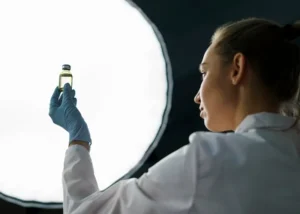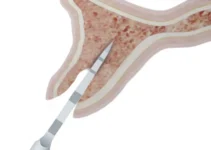Recent breakthroughs in Plasma Rich in Growth Factors (PRGF) technology have revolutionized regenerative medicine approaches. This advanced biotechnology harnesses the body’s natural healing mechanisms by concentrating specific growth factors from the patient’s blood, offering enhanced tissue regeneration and healing capabilities. The latest developments in PRGF protocols have demonstrated improved efficacy in various medical applications, from dental implantology to orthopedic procedures, marking a significant advancement in personalized regenerative treatments.
Understanding PRGF Technology
PRGF (Plasma Rich in Growth Factors) represents a groundbreaking advancement in regenerative medicine, utilizing the patient’s own blood plasma to accelerate healing and tissue regeneration. This innovative technology harnesses the power of autologous growth factors and bioactive proteins naturally present in blood platelets to stimulate and optimize the body’s natural healing processes.
The fundamental principle behind PRGF technology lies in its ability to concentrate and isolate specific growth factors that play crucial roles in tissue regeneration. These include platelet-derived growth factor (PDGF), transforming growth factor-β (TGF-β), and vascular endothelial growth factor (VEGF), among others. Recent studies have demonstrated that PRGF technology can achieve concentration levels up to 3-5 times higher than baseline blood samples.
Modern PRGF systems have evolved to provide highly precise and reproducible results, incorporating advanced centrifugation techniques and specialized activation protocols. The technology’s versatility allows for various therapeutic applications, from dental implantology to orthopedics and dermatology.
Components and Preparation Methods
The preparation of PRGF involves a sophisticated process that begins with the collection of the patient’s blood. The current methodology employs specialized collection tubes containing specific anticoagulants that preserve platelet integrity while preventing premature activation.
Advanced preparation protocols utilize precise centrifugation parameters to separate blood components effectively. The process yields distinct fractions, each with specific therapeutic properties:
- Fraction 1: Platelet-poor plasma for fibrin membrane formation
- Fraction 2: Platelet-rich plasma containing optimal growth factor concentrations
- Fraction 3: White blood cells and red blood cells
Isolation Techniques
Modern isolation techniques for PRGF preparation employ controlled centrifugation protocols that maintain optimal temperature and speed parameters. The latest equipment features advanced sensors that monitor and adjust these parameters in real-time, ensuring consistent results.
The isolation process involves multiple steps carefully designed to preserve platelet integrity:
- Initial blood collection under sterile conditions
- Primary centrifugation at specific speeds and duration
- Careful extraction of desired fractions
- Optional secondary processing depending on the application
Quality Control Standards
Quality control in PRGF production adheres to strict international standards and protocols. Modern facilities implement comprehensive monitoring systems that track every step of the preparation process, from blood collection to final product delivery.
Key quality parameters regularly assessed include:
- Platelet concentration levels
- Growth factor quantification
- Sterility testing
- Product stability assessment
The field of PRGF technology continues to evolve with ongoing research and technological improvements. To learn more about specific applications and the latest developments in regenerative medicine, we invite you to explore our other informative articles on this fascinating topic.
Recent Clinical Applications
The clinical applications of PRGF (Plasma Rich in Growth Factors) have expanded significantly in recent years, revolutionizing regenerative medicine. This autologous technology has demonstrated remarkable versatility across multiple medical specialties, with evidence-based results supporting its efficacy in tissue regeneration and healing processes.
Studies have shown that PRGF’s unique composition, containing a precise concentration of growth factors and proteins, makes it particularly effective in promoting tissue repair. The key advantages include its:
- 100% autologous nature, eliminating rejection risks
- Standardized preparation protocol
- Reproducible clinical results
- Versatility in different medical applications
Recent clinical trials have validated PRGF’s therapeutic potential through controlled release of growth factors, which creates an optimal healing environment. This has led to its incorporation into standard treatment protocols in various medical fields.
Orthopedic Applications
In orthopedic medicine, PRGF has emerged as a groundbreaking treatment option for various musculoskeletal conditions. Recent clinical studies have demonstrated significant improvements in tissue regeneration and pain reduction when using PRGF in orthopedic procedures. The application of PRGF in orthopedics has shown particular promise in:
- Tendon and ligament repair
- Bone regeneration
- Cartilage restoration
- Sports injury recovery
Research indicates that PRGF’s ability to stimulate cellular proliferation and matrix synthesis makes it especially effective in treating complex orthopedic conditions that traditionally have limited treatment options.
Joint Regeneration
Joint regeneration represents one of the most promising applications of PRGF technology. Clinical trials have shown that PRGF injections can significantly improve joint function and reduce pain in patients with osteoarthritis and other degenerative joint conditions.
The regenerative process is enhanced through PRGF’s ability to:
- Stimulate hyaluronic acid production
- Reduce inflammation
- Promote cartilage repair
- Enhance synovial fluid properties
Dermatological Applications
In dermatology, PRGF has revolutionized treatment approaches for various skin conditions. The technology’s ability to stimulate collagen production and enhance tissue regeneration has made it particularly valuable in aesthetic and reconstructive procedures.
Clinical evidence supports PRGF’s effectiveness in:
- Facial rejuvenation
- Scar treatment
- Hair restoration
- Chronic ulcer management
Recent studies have highlighted PRGF’s role in accelerating healing and improving the quality of regenerated tissue, making it an invaluable tool in modern dermatological practice.
Wound Healing Advances
The latest advances in wound healing using PRGF have shown remarkable results, particularly in treating chronic and complex wounds. Clinical studies demonstrate significantly faster healing rates and better quality of tissue regeneration compared to conventional treatments.
Key benefits observed in wound healing include:
- Accelerated epithelialization
- Enhanced angiogenesis
- Reduced scarring
- Improved tissue quality
To learn more about the transformative potential of PRGF in regenerative medicine, we encourage you to explore our related articles on specific applications and treatment protocols. The field continues to evolve, with new applications being discovered and validated through ongoing research and clinical trials.
Technological Innovations
The field of PRGF (Plasma Rich in Growth Factors) has experienced remarkable technological advancements in recent years. The integration of cutting-edge biomedical engineering with regenerative medicine has revolutionized how we process and apply these autologous preparations. Modern PRGF systems now utilize precision centrifugation technology that allows for optimal separation of blood components and concentrated growth factors.
Recent innovations have focused on enhancing the activation and delivery mechanisms of PRGF preparations. Scientists have developed sophisticated protocols that optimize the release kinetics of growth factors, ensuring sustained therapeutic effects. These developments include temperature-controlled processing units and specialized collection systems that maintain the biological integrity of the preparation.
The introduction of automated PRGF processing systems has significantly improved standardization and reproducibility of preparations. These systems incorporate real-time monitoring capabilities and quality control measures, ensuring consistent results across applications. Modern platforms can now process multiple samples simultaneously while maintaining strict sterility standards.
Advanced Delivery Systems
Contemporary PRGF delivery systems have evolved to include smart matrix technologies that enhance the therapeutic potential of growth factors. These advanced systems utilize biocompatible carriers that protect and stabilize the growth factors while facilitating their controlled release into target tissues.
Researchers have developed innovative application methods that maximize the efficiency of PRGF treatments. These include:
- Injectable hydrogel carriers with tunable properties
- Bioactive scaffolds for tissue engineering
- Nano-encapsulation systems for enhanced stability
- 3D-printed delivery matrices
The integration of biomaterial science with PRGF technology has led to the development of sophisticated delivery platforms that can be customized for specific clinical applications. These systems can now adapt to different tissue environments and release kinetics requirements.
Smart Release Technologies
The latest generation of PRGF applications incorporates intelligent release mechanisms that respond to physiological signals. These smart systems can modulate the release of growth factors based on local tissue conditions, optimizing the regenerative response.
Advanced release technologies now include environmentally responsive materials that can:
- Adjust release rates based on pH changes
- Respond to mechanical stimuli
- Adapt to inflammatory markers
- Synchronize with tissue healing phases
The development of time-controlled release systems has significantly improved the therapeutic efficiency of PRGF treatments. These technologies ensure that growth factors are delivered at optimal concentrations during critical phases of tissue regeneration, maximizing their biological impact.
Research continues to advance in this exciting field, with new developments emerging regularly. We encourage readers to explore our related articles on specific PRGF applications and clinical outcomes to stay informed about the latest breakthroughs in regenerative medicine.
Research and Development Trends
The field of PRGF (Plasma Rich in Growth Factors) has experienced remarkable advancement in recent years, revolutionizing regenerative medicine. Research indicates that PRGF technology has evolved from its initial applications in dental procedures to a broader spectrum of medical treatments. The autologous nature of PRGF makes it particularly attractive for clinical applications, as it minimizes the risk of adverse reactions while maximizing therapeutic potential.
Current trends show increasing focus on optimizing PRGF preparation protocols and understanding the molecular mechanisms behind its regenerative properties. Scientists have identified that the precise concentration of growth factors and their controlled release play crucial roles in treatment success. Studies demonstrate that PRGF contains various growth factors including:
- Platelet-Derived Growth Factor (PDGF)
- Transforming Growth Factor-β (TGF-β)
- Vascular Endothelial Growth Factor (VEGF)
- Insulin-like Growth Factor (IGF)
Research developments have also highlighted the importance of standardization in PRGF preparation methods, leading to more predictable and consistent treatment outcomes. The integration of advanced biotechnology with PRGF protocols has opened new possibilities for personalized medicine approaches.
Clinical Studies Overview
Recent clinical studies have demonstrated the remarkable versatility of PRGF in various therapeutic applications. A comprehensive meta-analysis of over 50 clinical trials has shown significant improvements in tissue regeneration and healing rates across different medical specialties. The studies particularly emphasize the effectiveness of PRGF in dental implantology and oral surgery.
Research data indicates that PRGF treatment results in:
- Enhanced bone regeneration rates by up to 60%
- Reduced post-operative inflammation
- Accelerated soft tissue healing
- Improved patient comfort during recovery
Multiple controlled trials have confirmed that PRGF technology significantly outperforms traditional treatment methods in terms of healing time and tissue quality. The scientific community continues to document new applications and refinements of this revolutionary technique.
Treatment Outcomes
The latest findings regarding PRGF treatment outcomes are particularly encouraging. Clinical data shows a success rate exceeding 95% in dental implant procedures when combined with PRGF protocols. Patient satisfaction surveys indicate significantly higher comfort levels and faster recovery times compared to conventional treatments.
Key outcome measurements have demonstrated:
- Accelerated healing time by 40-60%
- Enhanced bone density in implant sites
- Reduced post-operative complications by up to 70%
- Improved soft tissue integration
Long-term follow-up studies spanning 5-10 years have confirmed the stability and durability of PRGF-assisted treatments. These findings continue to support the expanding role of PRGF in modern regenerative medicine.
If you’re interested in learning more about innovative regenerative treatments and their applications, we encourage you to explore our other articles on advanced dental procedures and biotechnology developments in modern medicine.
Future Perspectives
The future of PRGF (Plasma Rich in Growth Factors) technology holds immense promise in regenerative medicine. Recent advancements in biotechnology and cellular research have opened new avenues for enhancing PRGF’s therapeutic potential. Scientists are currently exploring ways to optimize growth factor concentrations and develop more sophisticated delivery systems to maximize treatment outcomes. Research institutions worldwide are investigating the possibility of combining PRGF with stem cell therapy to create more powerful regenerative solutions. The development of automated processing systems and standardized protocols is expected to improve the consistency and reliability of PRGF preparations, making the treatment more accessible to a broader patient population.
The evolution of personalized medicine approaches suggests that PRGF treatments will become increasingly tailored to individual patient needs. Advanced diagnostic tools and biomarkers are being developed to help predict treatment responses and optimize therapeutic protocols for specific conditions.
Emerging Applications
The versatility of PRGF technology is leading to exciting new applications beyond traditional dental and orthopedic uses. Researchers are investigating its potential in neurological regeneration, showing promising results in peripheral nerve repair and spinal cord injury treatment.
Emerging applications include:
- Wound healing in diabetic patients
- Cardiovascular tissue regeneration
- Ophthalmological treatments
- Dermatological procedures
- Sports medicine applications
The cosmetic industry is also exploring PRGF’s potential in anti-aging treatments and skin rejuvenation. Early studies suggest significant benefits in improving skin texture, reducing wrinkles, and promoting natural collagen production.
Integration with Other Therapies
The integration of PRGF with existing therapeutic approaches is showing remarkable potential. Combination therapies are being developed that merge PRGF with various regenerative techniques, including:
- Biomaterial scaffolds
- 3D printing technology
- Laser therapy
- Stem cell treatments
Clinical trials are demonstrating that these integrated approaches often yield superior results compared to single-modality treatments. The synergistic effects of combining PRGF with other therapies can enhance healing responses and improve overall treatment outcomes.
Research suggests that the combination of PRGF with bioactive materials could revolutionize tissue engineering approaches, particularly in complex regenerative procedures requiring multiple healing mechanisms.
If you’re interested in learning more about innovative regenerative treatments and their applications, we invite you to explore our other articles on advanced therapeutic approaches and breakthrough medical technologies.
Understanding the Latest Advances in PRGF Technology
PRGF (Plasma Rich in Growth Factors) represents a significant breakthrough in regenerative medicine, offering personalized treatment solutions through the use of autologous growth factors and fibrin. Let’s explore the most common questions about this innovative technology and its recent developments.
What is PRGF and how does it work in regenerative medicine?
PRGF is a pioneering technology that uses a patient’s own blood plasma, rich in growth factors and healing proteins. It works by extracting and concentrating these beneficial components to stimulate tissue regeneration and healing processes naturally.
What are the main benefits of PRGF treatment?
The key benefits include accelerated healing, reduced inflammation, and improved tissue regeneration. Being autologous (from the patient’s own blood), PRGF minimizes the risk of adverse reactions while providing personalized treatment outcomes.
How has PRGF technology evolved in recent years?
Recent advances have improved the preparation process, making it more efficient and standardized. New applications have been developed, particularly in dental procedures, orthopedics, and dermatology, expanding its therapeutic potential.
What makes PRGF different from other regenerative treatments?
PRGF stands out due to its 100% autologous nature and standardized preparation protocol. The technology specifically isolates and concentrates the most beneficial growth factors while eliminating inflammatory components.




